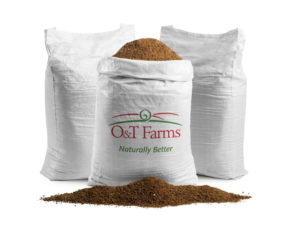Perspective: Can early embryonic losses be reduced in lactating dairy cows?
Journal of Dairy Science, Vol. 106, No. 10, 2023.
This article, from the University of Florida, explains that pregnancy failure for cows not diagnosed pregnant is the result of one of a variety of causes including insemination errors, anovulation, fertilization failure and embryonic death. Failure of ovulation in lactating dairy cows raised under intensive conditions occurs in about 3% to 7% of cases. About 12% to 21% of oocytes are not fertilized in the absence of heat stress and only about 50% of ovulated oocytes become viable embryos at days six to eight after insemination. Subsequently, about 32% of embryos die between days 19 and 32 of gestation. Another aspect is that there is little evidence for additional pregnancy failure through day 70. The conclusion is that early embryonic loss is a major cause for failure of females to be diagnosed as pregnant in a range of management settings.
The author answers the question of the title of the article with a strong yes, and advances two main reasons for that. First, many dairy herds already enjoy high levels of fertility including those in which pregnancies per insemination average 50% or more. These herds have successfully incorporated one or more new technologies that increase reproductive function including timed A.I.; improved transition cow management to reduce metabolic, inflammatory and infectious disease; and genetic selection for relatively new traits like daughter pregnancy rate or cow conception rate. The second reason why early embryonic losses will decline is because new approaches to improve pregnancy outcomes will emerge from research to better understand the biological determinants of a successful pregnancy.
The author provides some background information explaining that the proportion of ovulated oocytes (eggs) that become a blastocyst is reduced in the lactating cow and that two causes for reduced oocyte competence are altered follicular growth under a low progesterone environment and ovulation of aged follicles caused by prolonged growth of the preovulatory follicle. He indicates that timed A.I. programs have been developed that can alleviate these problems. On the other hand, other physiological, nutritional and immunological changes associated with lactation could also affect oocyte competence. Folliculogenesis requires around 120 days, and disruptions in oocyte growth early in development (for example, heat stress and uterine infection) can affect developmental competence of the ovulated oocyte. Lactation itself changes endometrial gene expression and reduces maternal support for embryonic development.
One of the major determinants of fertility of the lactating cow is health status. Cows that experience one or more clinical diseases in the postpartum period have reduced probability of a successful pregnancy after breeding. This is true whether the disease is classified as a uterine disease (retained placenta or metritis) or a nonuterine disease (mastitis, lameness, digestive or respiratory problems) or whether disease was diagnosed during the period during preantral follicle growth (more than 42 days before breeding), antral follicle growth (day 42 to day one relative to breeding) or the early post-breeding period (days zero to 42 relative to breeding). It is suggested that the fact that so many different conditions associated with activation of innate or acquired immune responses can all lead to reduced fertility suggests there are some common mechanisms.
The author concludes that advances in omics technologies (this refers to a multidisciplinary field that encompasses genomics, epigenomics, transcriptomics, proteomics and metabolomics) and machine learning are providing tools to develop markers of oocyte, embryo and cow competence to establish pregnancy, and these or other biomarkers should prove useful to assess how genetic, physiological, nutritional and other factors are responsible for variation in fertility among lactating cows and could result in new approaches for enhancing the proportion of postpartum cows that are fertile.
Perspective: Could dairy cow nutrition meaningfully reduce the carbon footprint of milk production?
Journal of Dairy Science, Vol. 106, No. 11, 2023.
This article, from the University of Pennsylvania, discusses the question whether dairy cow nutrition can meaningfully reduce the carbon footprint of milk production. The major greenhouse gases (GHGs) contributing to the carbon footprint of milk (CFM) on a dairy farm are methane (from enteric fermentation and manure management) and nitrous oxide (from manure management and feed production).
The effect of animal nutrition is expected to primarily affect ruminal fermentation, so the article focuses on enteric methane mitigation. The author indicates that there are several metrics used to evaluate emissions, like daily methane emission (grams per day), methane emission yield (grams per kilogram of dry matter intake [DMI]) and emission intensity (grams per kilogram of milk or fat- and protein-corrected milk [ECM], or average daily gain [ADG] in growing animals). Depending on the production system, CFM has been estimated at as low as 0.75 to as high as 1.21 and even over 5 kilograms of CO2 equivalents per kilogram ECM, with the general trend being for lower CFM in intensive versus extensive production systems. The author provides a reference saying that a meaningful reduction in CFM should exceed 10% and preferably be greater than 20%.
A recent meta-analysis of global data carried out by an international group of scientists recommended several strategies that can reduce absolute or relative (per unit of product) enteric methane emissions in ruminants by 12% to 32%. Two of those are improving forage quality (i.e., digestibility) and inclusion of more concentrate feeds in the diet, and the author says that these may be applicable to the U.S. dairy industry.
In terms of forages, the current studies, in the case of corn silage versus alfalfa silage, indicate that the carbon footprints of growing the two forages are similar, but enteric methane emissions are decreased when corn silage (starch content of the silage will also have an effect) replaces alfalfa silage.
Increased intake of digestible organic matter promotes methane production, but the type of organic matter can influence emissions. Increasing the proportion of starch/non-fibre carbohydrates in the total dietary carbohydrates would decrease methane emissions. Increased concentrate-to-forage ratio in dairy diets, however, is typically associated with decreased neutral detergent fibre (NDF) degradability and may decrease milkfat content and yield and cause milkfat depression.
Several studies so far have identified different substances that when added to the diet can have sizable and consistent mitigation effects on enteric methane. A key requirement with all methane-mitigating additives is to not depress or affect in a negative way feed intake, milk production and composition, animal health and reproduction.
Currently, a big concern with the use of feed additives is that the rumen ecosystem has a tremendous adaptability to fermentation modifiers over time. This means that any product used to mitigate methane production needs to be tested in long-term animal experiments before they are recommended to livestock industries.
Another important aspect is the cost of methane mitigation. The author says that as a business, a dairy farm cannot (or should not) lose money and should be either somehow compensated for increased feed cost because of using these additives (premium for “low-carbon footprint” milk, carbon credits) or there must be co-benefits of the practice, such as increased milk production or components, bodyweight gain or improved animal health. The last two co-benefits, in addition to reproductive performance, can only be investigated in long-term studies and typically with a large number of animals, which puts an additional strain on researchers and companies developing these products.
The author adds that in addition to nutritional strategies, progress is expected in areas such as methanogen vaccines and genetic selection for low-methane emitters. It is important to mention that reliable methane emission measurement techniques are also needed to reduce the cost and accelerate testing of nutritional strategies across different animal types and a wide variety of diets. Because most ruminants on the planet are predominantly on pasture and may not have access to feed on a regular basis, it is also important to develop technologies for delivering mitigants directly into the rumen, such as slow-release devices. The author says that this work is underway, and progress is plausible.
The article concludes that nutritional approaches alone can have a significant mitigation impact on the carbon footprint of milk, but that effect can be considerably greater if approaches are integrated, particularly in intensive dairy production systems, with manure and animal management-related (animal health, longevity or lifetime productivity, genetics) mitigation practices. If manure mitigation practices (such as solid and liquid separation, anaerobic digesters, manure covers, acidification and aeration, which reportedly can reduce manure methane emissions by 70% to 80%) are added to the equation, it might be possible to decrease the CFM in intensive dairy production systems, such as in the U.S., by 35% to 42%.
This column brings you information regarding some of the research being done around the world and published in the Journal of Dairy Science. The objective is to bring to light areas of research that may have an immediate practical application on a dairy farm, as well as research that, even though it may not have a practical impact now, could be interesting for its future potential application. The idea is to give a brief overview of select research studies but not go into detail on each topic. Those interested in further in-depth reading can use the citations to find each study.










